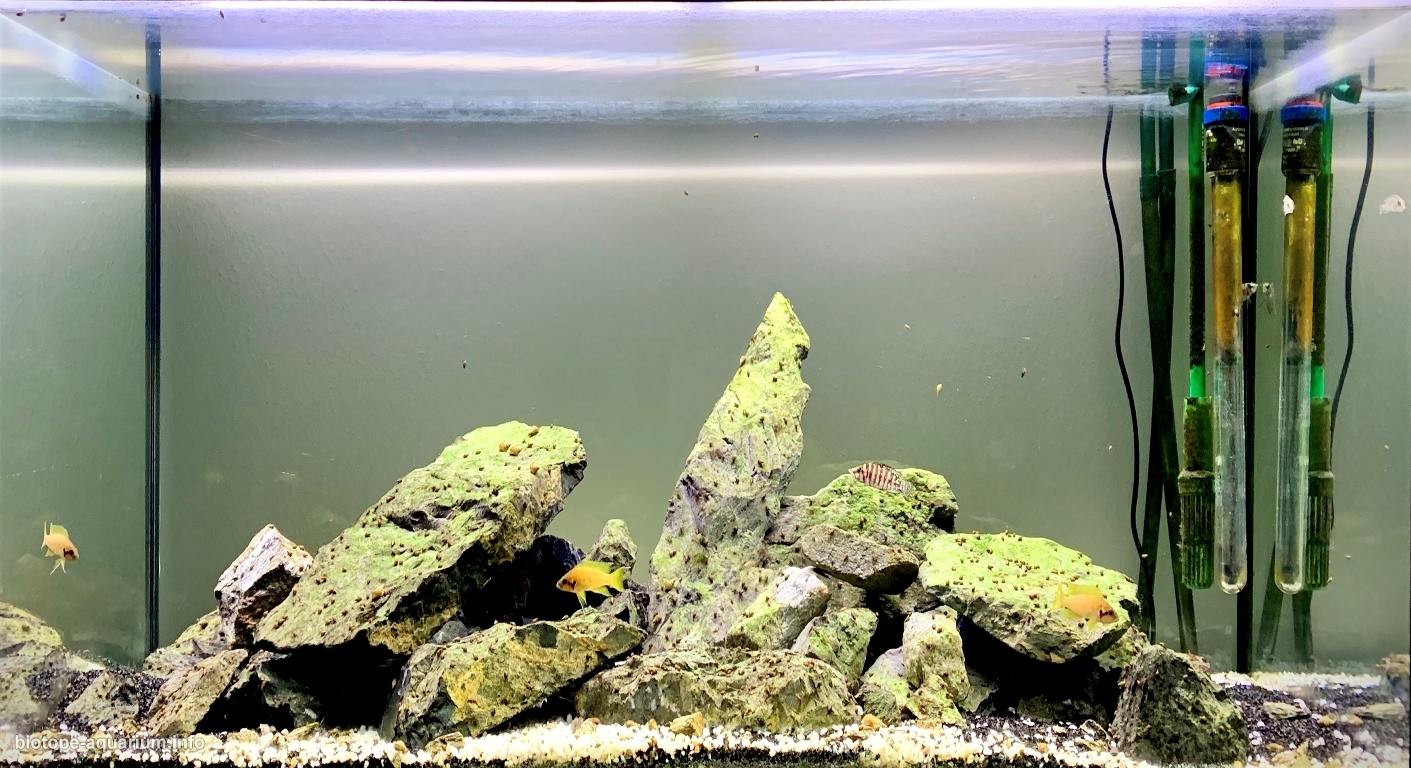Lake Tanganiyka, West Coast, Congo
_th place in Biotope Aquarium Design Contest 2020

Volume: 180 liters
Dimensions: 101x40x45
List of fishes: Neolamprologus Heliantus
Altolamprologus Calvus
List of plants: no Plants
Description of decorations: I used rocks very similar to those in nature.
Description of equipment: External Filter Eheim Ecco Pro 300
Aquatlantis Easy Led Freshwater 895 mm
Water parameters: Temperature is 25,5 °C
pH is 8.1
Additional info: –
INFORMATION ABOUT BIOTOPE:
Description of the area surrounding the biotope: Lake Tanganyika is an African Great Lake. It is the second-oldest freshwater lake in the world, the second-largest by volume, and the second-deepest, in all cases after Lake Baikal in Siberia. It is the world’s longest freshwater lake. The lake is shared between four countries – Tanzania, the Democratic Republic of the Congo (DRC), Burundi, and Zambia, with Tanzania (46%) and DRC (40%) possessing the majority of the lake. It drains into the Congo River system and ultimately into the Atlantic Ocean.
Description of the underwater landscape of the biotope: Tanganyika is an extremely rocky lake
Description of the parameters of the habitat: he lake’s water is alkaline with a pH around 9 at depths of 0–100 m (0–330 ft). Below this, it is around 8.7, gradually decreasing to 8.3–8.5 in the deepest parts of Tanganyika. A similar pattern can be seen in the electric conductivity, ranging from about 670 μS/cm in the upper part to 690 μS/cm in the deepest.
Surface temperatures generally range from about 24 °C (75 °F) in the southern part of the lake in early August to 28–29 °C (82–84 °F) in the late rainy season in March—April.At depths greater than 400 m (1,300 ft), the temperature is very stable at 23.1–23.4 °C (73.6–74.1 °F). The water has gradually warmed since the 1800s and this has accelerated with global warming since the 1950s.
The lake is stratified and seasonal mixing generally does not extend beyond depths of 150 m (490 ft). The mixing mainly occurs as upwellings in the south and is wind-driven, but to a lesser extent, up- and downwellings also occur elsewhere in the lake. As a consequence of the stratification, the deep sections contain “fossil water”. This also means it has no oxygen (it is anoxic) in the deeper parts, essentially limiting fish and other aerobic organisms to the upper part. Some geographical variations are seen in this limit, but it is typically at depths around 100 m (330 ft) in the northern part of the lake and 240–250 m (790–820 ft) in the south.[The oxygen-devoid deepest sections contain high levels of toxic hydrogen sulphide and are essentially lifeless, except for bacteria
List of fishes and invertebrates occurring in the nature biotope: Genera:
Altolamprologus, Cyprichromis, Eretmodus, Julidochromis, Lamprologus, Neolamprologus, Tropheus and Xenotilapia,
List of plants found in the nature biotope: Lemna minor
Threats to the ecology:
Sources of information:
